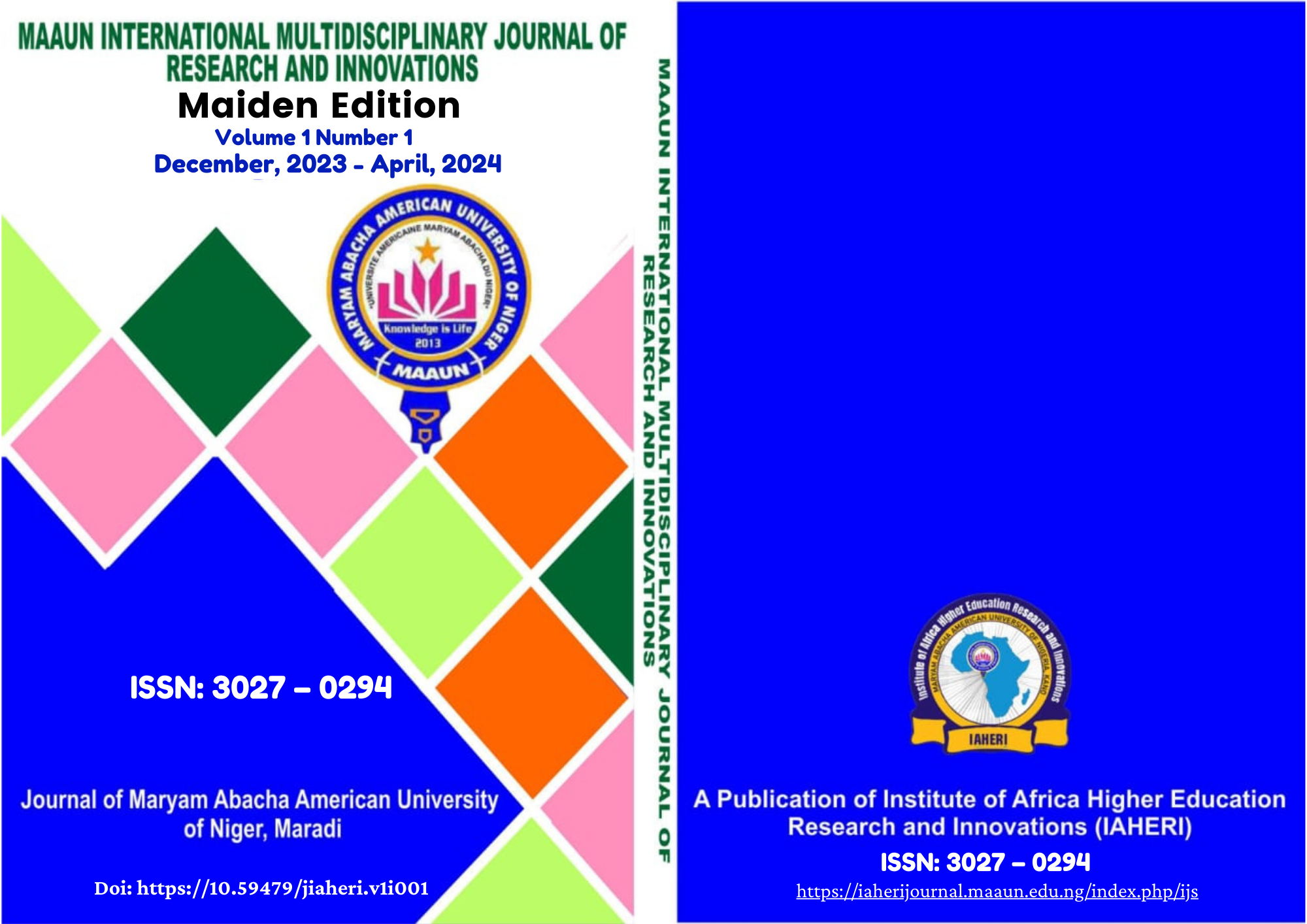The Significance of English Language and its Relevance to the Preservation of the Qur'anic Script
Published 09/24/2024
Keywords
- English Language,
- Qur'anic Script,
- Qur'an Resources,
- English Translation,
- and Interpretation
How to Cite
Abstract
The paper studied the significance of the English language and its relevance to the preservation of the Qur'anic script. The paper provides an overview of the English language in the Qur'anic Script and its roles in English translation and interpretation of the holy Qur'an. It discussed the challenges and controversies in the Qur'anic script translation and highlighted the significance of digital media for the preservation and dissemination of the Qur'an. It also explained the utilization of English for the digital distribution of Qur'an resources and the accessibility of Qur'anic scripts and resources in English for the benefit of non-Arabic speakers. The paper investigated the English language research for the understanding of the Qur'anic script and the significance of the English language on the global perception of Islam and the Qur'an. Finally, the study looked into the English translations of the Qur'an and their significant contributions to interfaith dialogue.
References
- Abdul Malek, M. (2000). AStudyoftheQur'an:TheUniversalGuidanceforMankind(3 ed.). M. A. Malek.
- Abdul-Raof, H. (2013). Qur'antranslation:discourse,texture,andexegesis.Routledge.
- Ali, A. Y. (2004). TheMeaningoftheHolyQu'ran.Amana Pubns.
- Allibaih, M. (2019). Presenting the Qur'anic Text in a Developed Mapping Technique and Reflecting the Related Theories of Linguistics. JournalofArtsandHumanities, 8, 8. https://theartsjournal.org/index.php/site/article/view/1642
- Al-Mosallam, E. A. (2013). Towards Improving Quran Memorization Using Mind Maps. Paper presented at the Advancesin Information Technology forthe HolyQuran and Its Sciences(32519), 2013 Taibah University International Conference.
- El-Awa, S. M. (2006). Textual Relations in the Qur'an: Relevance,Coherence,and Structure.Routledge.
- Hakak, S., Kamsin, A., Tayan, O., Idris, M. Y. I., Gani, A., & Zerdoumi, S. (2017). Preserving the Content Integrity of the Digital Holy Quran: A Survey and Open Challenges IEEE Access Retrieved from https://www.researchgate.net/publication/315904390_Preserving_Content_Integrit y_of_Digital_Holy_Quran_Survey_and_Open_Challenges
- Hala T., Lara Q. & Al-Heeh, S. (2019). Women’s Language in the English Interpretations of the Qur’anic Discourse: Plenty of Verbal Clues that Urge Women to Keep Face, Be Polite, and Tell the Truth Advances in the Linguistic Sciences, Vol. 1, No. 1.
- Hausser, R. (2012). Computation of language: an essay on syntax, semantics, and pragmatics in natural man-machine communication, Springer Science & Business Media
- Irwandi, M. (2018). The Qur’anic Concept of Human Language: A Preliminary Study on Science-Religion Integration in Studying Sociolinguistics Advances in Social Science, Education, and Humanities Research, volume 178, 1st International Conference of Innovation in Education (ICoIE 2018).
- Kamsin, A. Gani, A., Suliaman, I. Jaafar, S., Mahmud, R., and Sabri, M. (2014). "Developing the novel Quran and Hadith authentication system," in Information and Communication Technology for the Muslim World (ICT4M), 2014, The 5th
- International Conference on, 2014, pp. 1–5.
- Khan, M. K. and Alginahi, Y. M. (2013). "The holy Quran digitization: challenges and concerns," Life Science Journal, vol. 10, pp. 156–164.
- Malakoff, M., & Hakuta, K. (1991). Translation skills and metalinguistic awareness in bilinguals Language processing in bilingual children, 141–166.
- Rashwan, M. A., Ramadan, A., Safwat, H. M., Ashraf, S., & Mamdouh, H. (2016). Data preparation and handling for the written Quran script verification paper presented at the Digital Signal Processing, Ain Shams University, Ain Shams.
- Syifak-Izhar, H.; Jasni, M. Z.; and Afifah-Nailah, M. & Gran, B. (2013). "Localization Watermarking for Authentication of Text Images in the Quran,"
- Taslaman, C. (2006). The Qur'an: An Unchallengeable Miracle in Turkey: Citlembik Publications.

